The Snowball Effects of Burnout: Organizational Devastation and Individual Burnout
The pandemic has had a devastating impact on the health of the workforce and its employees!
Employers are experiencing…
Lost your password? Please enter your email address. You will receive a link to create a new password.

The pandemic has had a devastating impact on the health of the workforce and its employees!
Employers are experiencing…
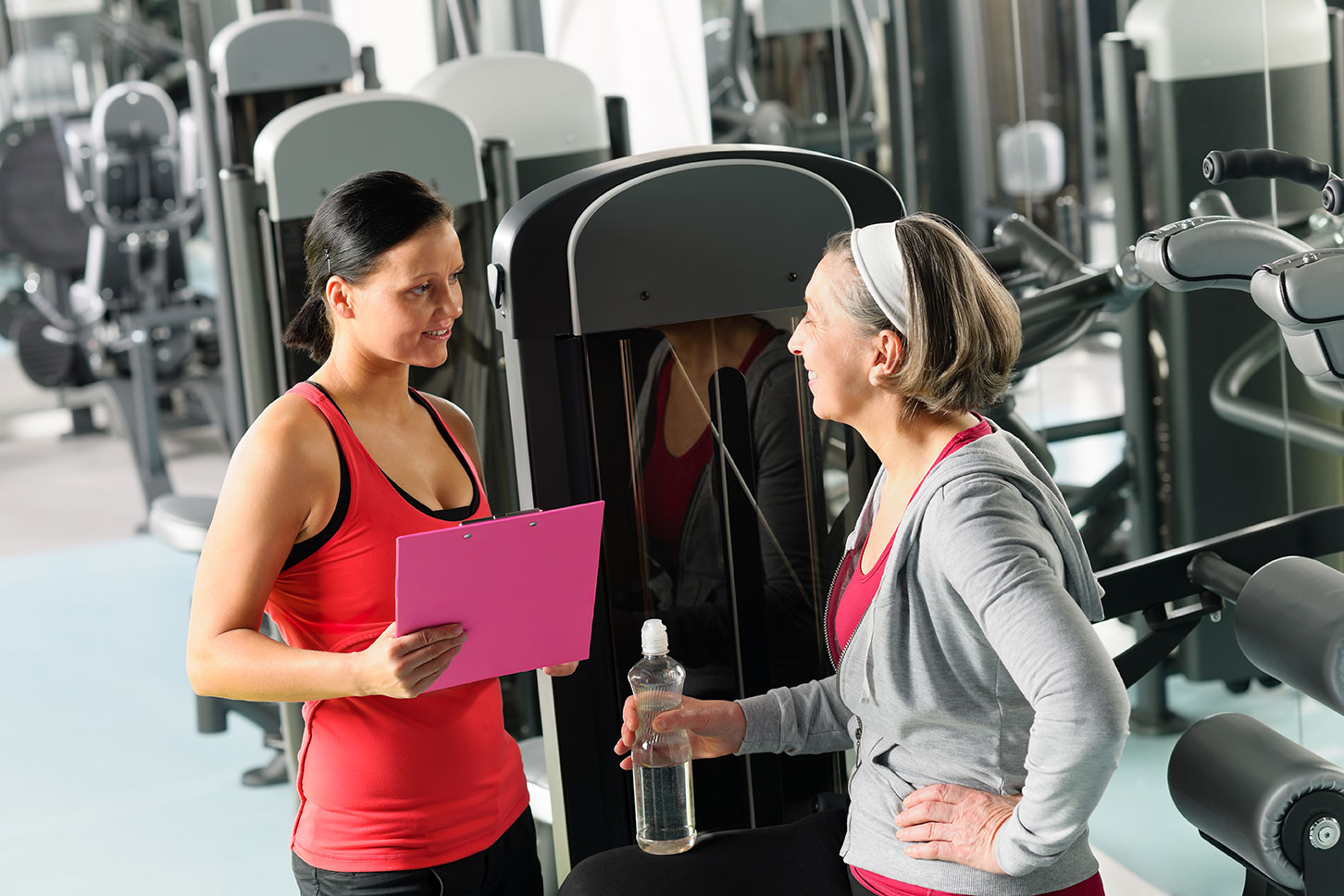
Healthcare through fitness is not really a new concept and goes back to ancient Greek times. I believe there is an undeniable power in the collaboration of the two.

I remember the first time I figured out what my piriformis was, and how having a tight piriformis and IT band affected my movements. I had just started running hard core. As a former dancer, we stretched our hamstrings, inner thighs, the “dancer muscles”. But a piriformis or IT band was not something a DANCER experienced as this was not a muscle that was targeted in ballet, or other forms of dance.
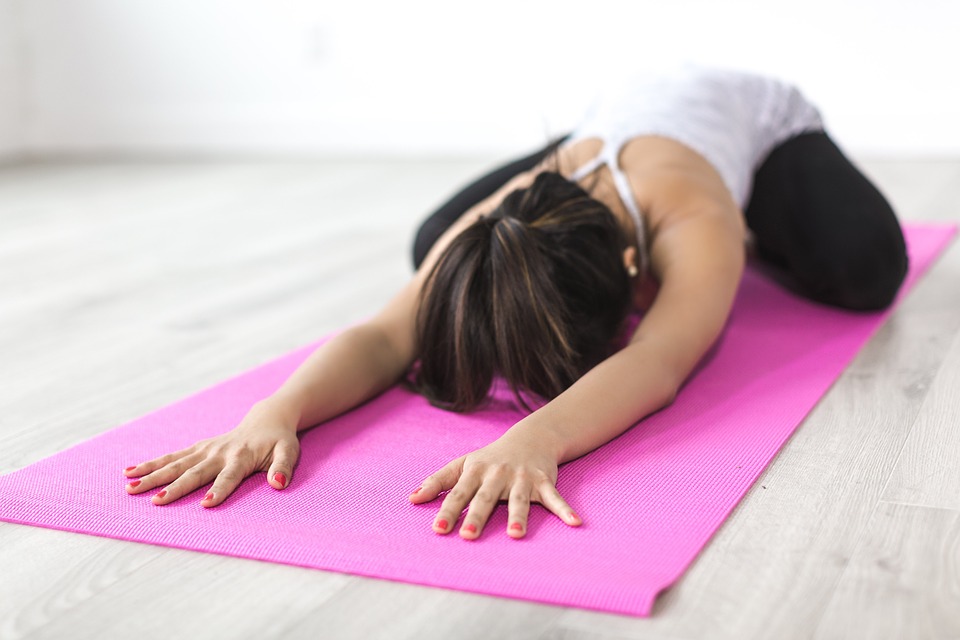
The PAIN, was a knot in the right side of my hip/tush. It began to radiate all the way down the side of my right leg. It even affected my lever length so that the right leg felt “shorter”. I eventually learned how to do stretches such as “parvritta trikonasana”, and a bastardized version of pigeon on my back to target this muscle group (the external rotators).
Also, as a swimmer, and runner, my calf muscles will get super tight. This eventually pulls on my achilles tendon. Having torn my right achilles tendon in a freak accident in 2002, I can tell you keeping the achilles tendon happy can make the difference between being able to walk or not. Hand to foot calf stretches both standing and supine, as well as forward bend, and parvritta trikonasana, will take care of the problem. I also flex my foot against a wall before starting my run.
If my knees ache, it is usually because my quads are tight. I start with alternating kick ups from down dog into lunges to warm up. I also do natarajasana, which provides me an open angled quad stretch.
My students will often have problems targeting their abdominals. Tight hamstrings and hip flexors are usually the problem. I will do a “half lunge” where they press through the psoas to release it, then stretch the ham/calf in a forward bend while flexing the front foot, and keeping the standing knee right under the hip.
For other hard to read groups, such as under the shoulder blades, nothing beats a foam roller. I body surf along the foam roller, and hold until the knot dissipates. I have a chapter in “Healthy Things You Can Do In Front of the TV” complete with photos to describe how to target key muscles.

Stretching is often a forgotten, and yet necessary part of fitness. It makes the difference between proper kinesthetic alignment and gait, or movement that is off-balance, which can cause injuries. Not to mention, it just feels good before or after an intense workout. It also aids in recovery, so that you can be ready for your next challenge. Even die-hard couch potatoes need to stretch. And many stretches can be done at work or at home. See my lovely book for more examples of how to keep your body functioning at its best.
Kama Linden has been teaching fitness for over 2 decades. She has taught strength, step, pilates, vinyasa yoga, senior fitness, and has worked with clients and students of all ages and fitness levels. She is certified by AFAA Group Exercise and NASM CPT, as well as 200 hour Yoga. She has a BFA in Dance from University of the ARTS. Her new book, “Healthy Things You Can Do In Front of the TV” is now on sale on Amazon, Barnes & Noble, and Kindle.

Offer up these simple tips to aid arthritic clients reduce flare-ups, decrease symptoms, and experience more pain-free days!
There are many simple practices that may greatly decrease the risk and severity of flare-ups. To help reduce painful and swollen joints, improve mood, and increase quality of life, implementing a few of these simple techniques may make a world of difference.
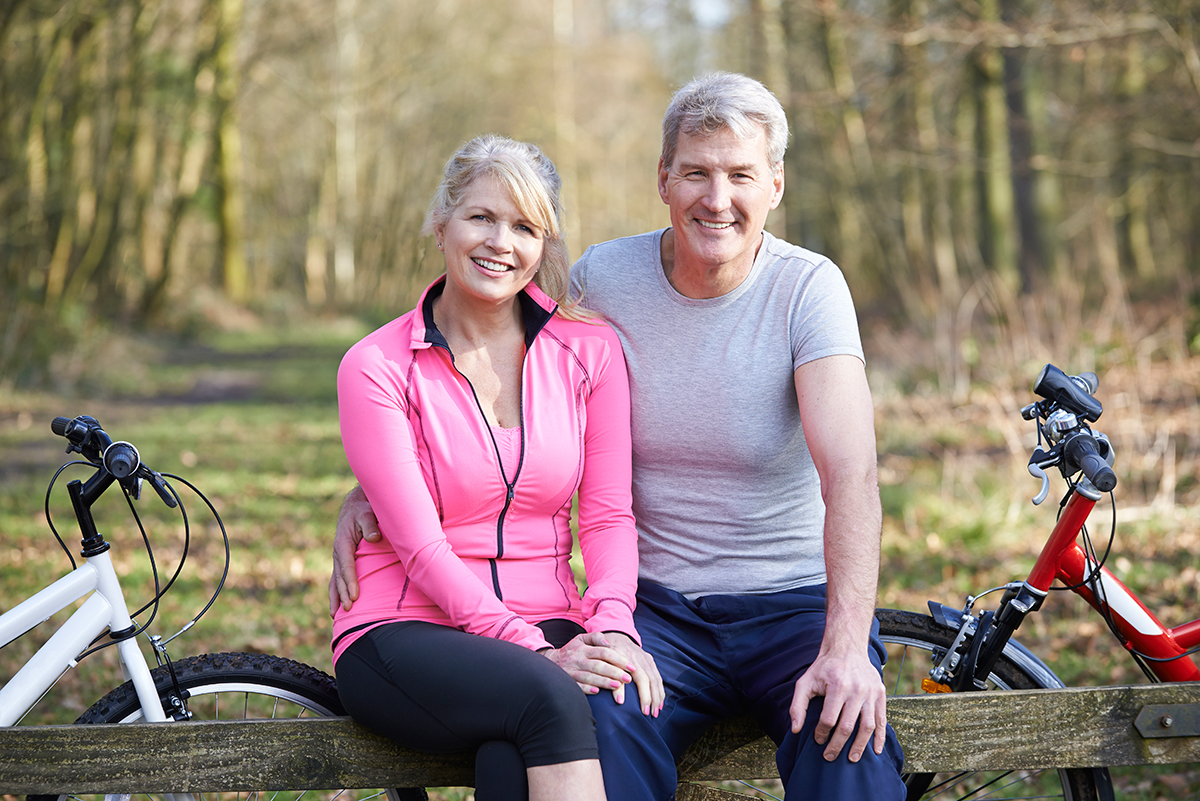
1. Drink Water! The body is comprised of about 60% water. Dehydration causes a decrease in function of all major organs, muscles, and even bones.
2. Get to Sleep! Adults of all ages need 7-9 hours of sleep each night. Sleep is when your body repairs muscles, organs, and cells. In this resting state, chemicals will circulate in the blood that help to strengthen the immune system.
3. Set a Schedule! Plan your days! Get into a routine of good habits. Setting alarms to get up, make phone calls, exercise, cleaning, and meals will provide a daily purpose. Writing “to-do” lists on a paper calendar and crossing off items as they are accomplished provides a heightened sense of satisfaction and self-worth.
4. Eat Real Food! The fewer ingredients, the better. Read labels to avoid too much sugar, salt, and oil. I call these the “S.O.S.” These are foods that are known to cause inflammation and increase the risk for flare-ups. For example, if you have the choice between an apple or apple pie, choose the apple with less ingredients. It also most likely contains less sugar or processed ingredients.
5. Exercise Daily! Think of exercise as something you “work in” each day and not as a “work out.” Improving muscle strength, mobility, flexibility, and cardiovascular health reduces symptoms of autoimmune disease.
6. Hiring a Arthritis Fitness Specialist once or twice a week to provide accountability and write safe and effective exercise programs is a great start!
7. Practice Mindfulness! The simple act of taking a few deep and meaningful breaths throughout the day is a great way to reduce stress and decrease negative physiological responses. Incorporating some gentle stretches in the morning, after periods of inactivity, and before bed is also a great way to bring awareness to the body, ease tension, reduce anxiety, and lessen the symptoms associated with arthritis.
Christine M. Conti, M.Ed, BA is and international fitness educator and presenter. She currently sits on the MedFit Education Advisory Board and has been nominated to be the 2020 MedFit Network Professional of the Year. She is the author of the MedFit Classroom Arthritis Fitness Specialist Course and is the CEO and founder of ContiFit.com and Let’s FACE It Together™ Facial Fitness & Rehabilitation. Christine is also the co-host of Two Fit Crazies & A Microphone Podcast and the co-owner of TFC Podcast Production Co.
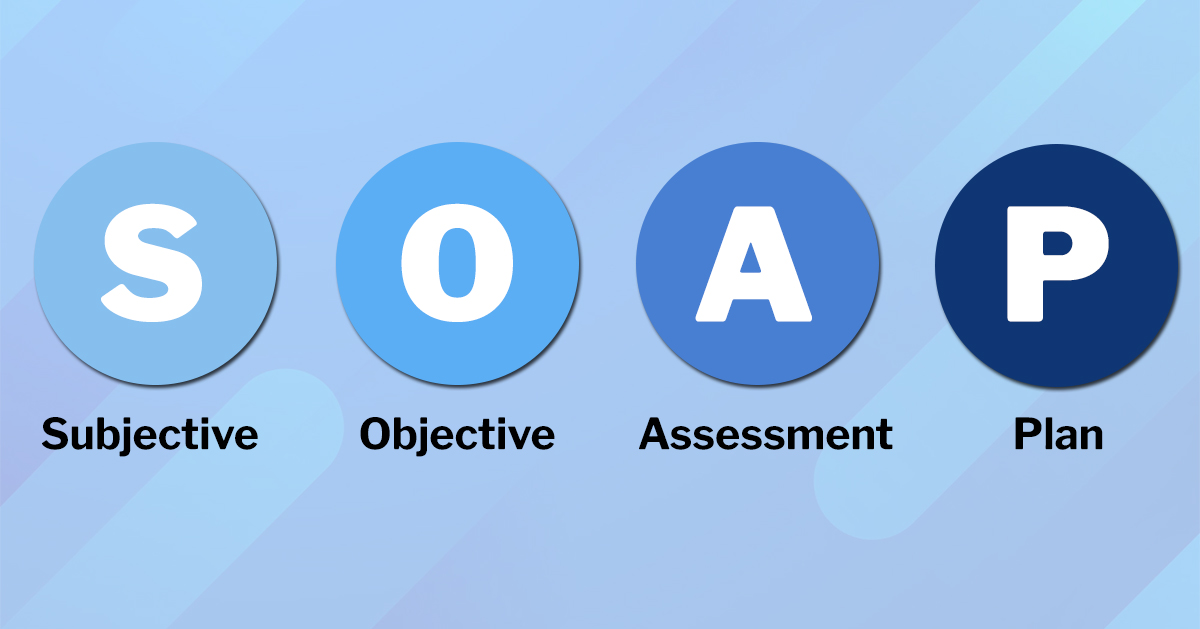
The SOAP note format, the acronym of which stands for Subjective, Objective, Assessment, and Plan, is one of the standard document formats that healthcare providers use to document patient information and treatment progress. This article will take you through the format and teach you how to use it with your medical fitness clients.
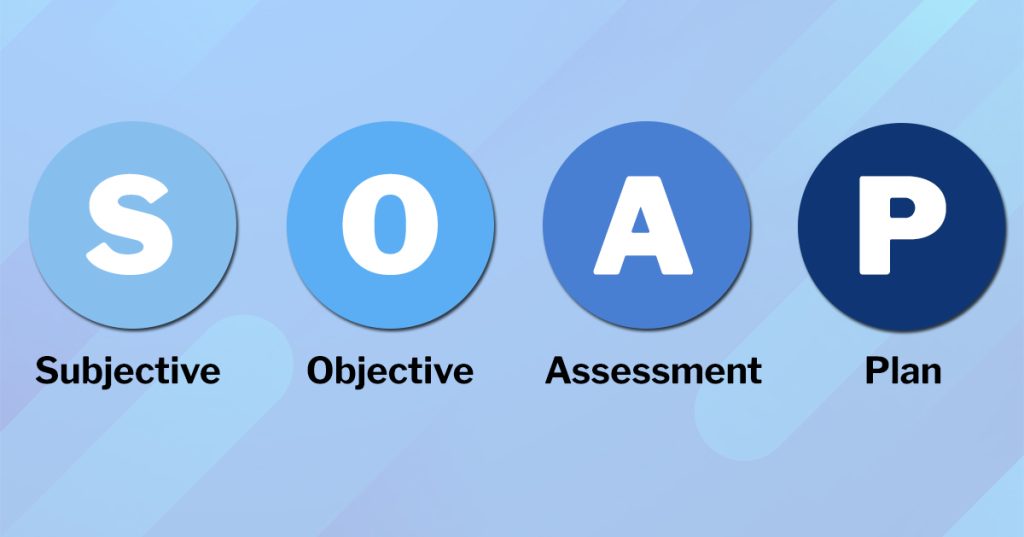
The Subjective section will include the Chief Complaint of the client/patient, which is the reason they are working with you. This can be an official diagnosis from a licensed healthcare provider, such as Type 2 Diabetes Mellitus, or a symptom of a condition that is causing quality-of-life reduction, disability, or pain. You are not diagnosing any disease, injury, or health condition. You are merely stating the reason for the visit. You can include a brief patient medical history in this section, though you should strive to be succinct in your summary. The healthcare provider for your patient already knows their conditions and struggles and does not need a full page on the topic.
The Objective section is for vitals, how the client/patient presents at the visit physically and psychologically (attitude) and any recent lab or imagery results that are pertinent to your scope of practice and the patient’s Chief Complaints. When documenting the results of lab tests, only record what was tested and whether the result (such as fasting blood glucose levels) falls within normative values for the client/patient population. When documenting imagery results, record the type of imagery and the reviewing technician’s assessment (such as an MRI that shows posterior rotator cuff tears). The vitals you can and should take are heart rate, blood pressure, weight, and today’s pain rating on a 1-10 scale if applicable.
The Assessment section is typically used by healthcare providers for differential diagnosis, which is outside your scope of practice. The Assessment section will consist of your statement on the client/patient’s conditions and how they currently influence their fitness and general health. This can include notes on nutrition and physical activity levels. If the client/patient is presenting with an issue that session, such as restriction in shoulder flexion past 80 degrees, you will document that as well. If joint ROM is a focus of the client/patient’s training plan you should assess this at the beginning of the session and document the current ROM state relative to the previous session or baseline evaluation.
The Plan section is where you record the client/patient training for the day. This is also where you will annotate future training/care plans, such as periodization and progression. This section tells the healthcare provider exactly what you are doing with their patient and enables them to provide you with objective feedback on your training plan if necessary. Your training plan should reflect all guidelines and restrictions the patient’s healthcare provider has given you.

Date: 5/1/2023
Patient Name: John Q. Public
Provider/Trainer Name: Slone, J.
Subjective:
Chief Complaint: pain secondary to posterior rotator cuff partial thickness tear, restriction in ROM due to said injury, weakness of posterior RC due to injury. Pt is alert, attentive, and appears in good spirits and motivated.
Objective:
HR: 85
BP: 120/90
WT: 241lbs
PAIN: 2/10 at rest
Assessment:
Horiz. Shldr abd. restricted to 70/90 degrees, dull, achy pain during concentric posterior RC movement that improves during warmup. No active shldr flex today. Shldr ext does not provoke pain. Ext. rot. does not provoke pain.
Plan:
Today’s Care:
Warmup: arm bike 5min @ RPE 3-4
2×12-15 low face pull w/medium-light band within pain-free ROM
2×12-15 horiz. Abd. w/light band within pain-free ROM
2×8-10 ext. rot. w/light band within PF-ROM
2×8-10 scap retrac. w/medium band
2×3-5 overhead eccentric weight bearing, 3lbs, no pain
2x30s cross-body posterior RC stretch
2×10/12 finger ladder steps within PF-ROM
Future Care:
Continue with periodized RT to build function and strength within PF-ROM. Improve joint restriction through flexibility plan. Adhere to PCP guidelines.
This not unlike what a completed SOAP note in a physical therapy clinic would look like. Objective measures that a PT would use are measured joint ROMs with a goniometer (visual estimation is nearly as accurate in most cases and is acceptable for you to use). In a PT clinic, the Plan would also include treatment modalities, which are outside the trainer’s scope of practice (massage, manual therapy, e-stim, heat, cold, etc).
While you are not required to use this format with your clients/patients, it is of great benefit to use a standardized format that ensures you capture all pertinent information and are able to relay that to allied healthcare providers.
Here is a Word document template for the SOAP note format that you may download and use with your patients: SOAP Note Template.
Reprinted with permission from the Move Well, Live Well blog.
Joshua Slone is an Exercise Physiologist and Pain Therapist. He serves as Rehab Team Lead/Physiologist at the Center for Health in Yucca Valley, CA. His clinical expertise includes chronic pain management, joint replacements, sport and orthopedic injuries, complex medical condition management, geriatrics, degenerative neurological conditions, and psychiatric disorders. Visit his website, movewelllivewell.org
References

According to the World Health Organization (WHO), hundreds of millions of people suffer every day from chronic respiratory diseases (CRD). Currently in the United States, 24.6 million people have asthma1, 15.7 million people have chronic obstructive pulmonary disease (COPD)2 while greater than 50 million people have allergic rhinitis3 and other often-underdiagnosed chronic respiratory diseases. Respiratory diseases do not discriminate and affect people of every race, sex, and age. While most chronic respiratory diseases are manageable and some even preventable, this is what is known about the nature of chronic respiratory diseases4:
If you are a health and fitness professional, some of your clients may be suffering from a chronic respiratory disease and you may be an important source for relief. Moderate exercise is known to improve use of oxygen, energy levels, anxiety, stress and depression, sleep, self-esteem, cardiovascular fitness, muscle strength, and shortness of breath. While it might seem odd that exercise improves breathing when one is short of breath, exercising really does help one with respiratory disease. Exercise helps the blood circulate and helps the heart send oxygen to the rest of the body. Exercise also strengthens the respiratory muscles which can make it easier to breathe.
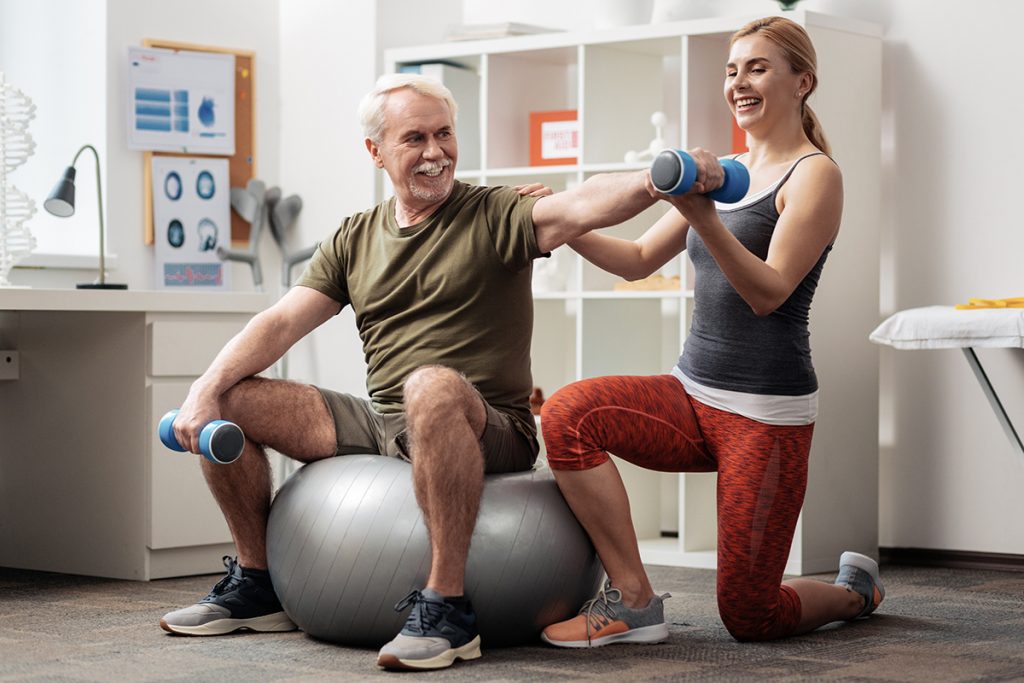
There are several challenges to exercise prescription and physical activity participation in this population, but a large body of evidence demonstrates important health benefits from aerobic exercise. Resistance training has also been shown to increase muscle mass and strength, enhancing individuals’ ability to perform tasks of daily living and improving health-related quality of life.5
Aerobic exercise is good for the heart and lungs and allows one to use oxygen more efficiently. Walking, biking, and swimming are great examples of aerobic exercise. The guidelines are approximately the same as generally healthy individuals. One should attempt to train the cardiorespiratory system 3-5 days a week for 30 minutes per session. One should exercise at an intensity level of 3-4 on the Rating of Perceived Exertion Scale (Scale Rating from 0 Nothing at All-10 Very, Very, Heavy).
Resistance exercise increases muscular strength including the respiratory muscles that assist in breathing. Resistance training usually involves weights or resistance bands but using one’s own body weight works just as well depending on the severity of the symptoms. It is recommended that one should perform high repetitions with low weight to fatigue the muscles. This type of resistance training also improves muscular endurance important for those with CRD. Resistance training should be performed 2-3 days a week working all major muscle groups.
Stretching exercises relax and improve one’s flexibility. When stretching, one should practice slow and controlled breathing. Not only does proper breathing help to deepen the stretch, but it also helps one to increase lung capacity. One should gently stretch all major muscles to the point of mild discomfort while holding the stretch for 15 to 30 seconds, slowly breathing in and out. Repeat each stretch 2-3 times. Stretching is an effective method to warming up and cooling down before and after workout sessions.
When exercising, it is important to remember to inhale in preparation of the movement and exhale on the exertion phase of the movement. An individual should take slow deep breaths and pace him/herself. It is recommended to purse the lips while exhaling.
If an individual uses medication for the treatment of respiratory disease, he/she should continue to take the medication based on his/her doctor’s advice. His/her doctor may adjust the dosage according to the physical activity demands. For example, the doctor may adjust the flow rate of oxygen during exercise if one is using an oxygen tank. In addition, one should have his/her inhaler on hand in case of a need due to the increase of oxygen demand during exercise.
Fitness professionals can effectively work with those who have a chronic respiratory disease providing them with a better quality of life through movement. You as their health and fitness coach can provide a positive experience to facilitate an effective path to better health and wellness.
Fitness Professionals & Personal Trainers: Become a Respiratory Disease Fitness Specialist!
Some of your clients may suffer from a respiratory disease and you may be an important source of relief. The Respiratory Disease Fitness Specialist online course will equip you with the knowledge to safely and effectively work with these clients to help improve their quality of life.
Known as the trainers’ trainer, CarolAnn has become one of the country’s leading fitness educators, authors, and national presenters. Combining a Master’s degree in Exercise Science/Health Promotion with several fitness certifications/memberships such as FiTOUR, ACSM, ACE, AFAA, and LMI, she has been actively involved in the fitness industry for over 25 years. She is currently the Founder and Director of Education for Chiseled Faith, a Faith Based Health and Fitness Program for churches. Visit her website, www.CarolAnn.Fitness
References
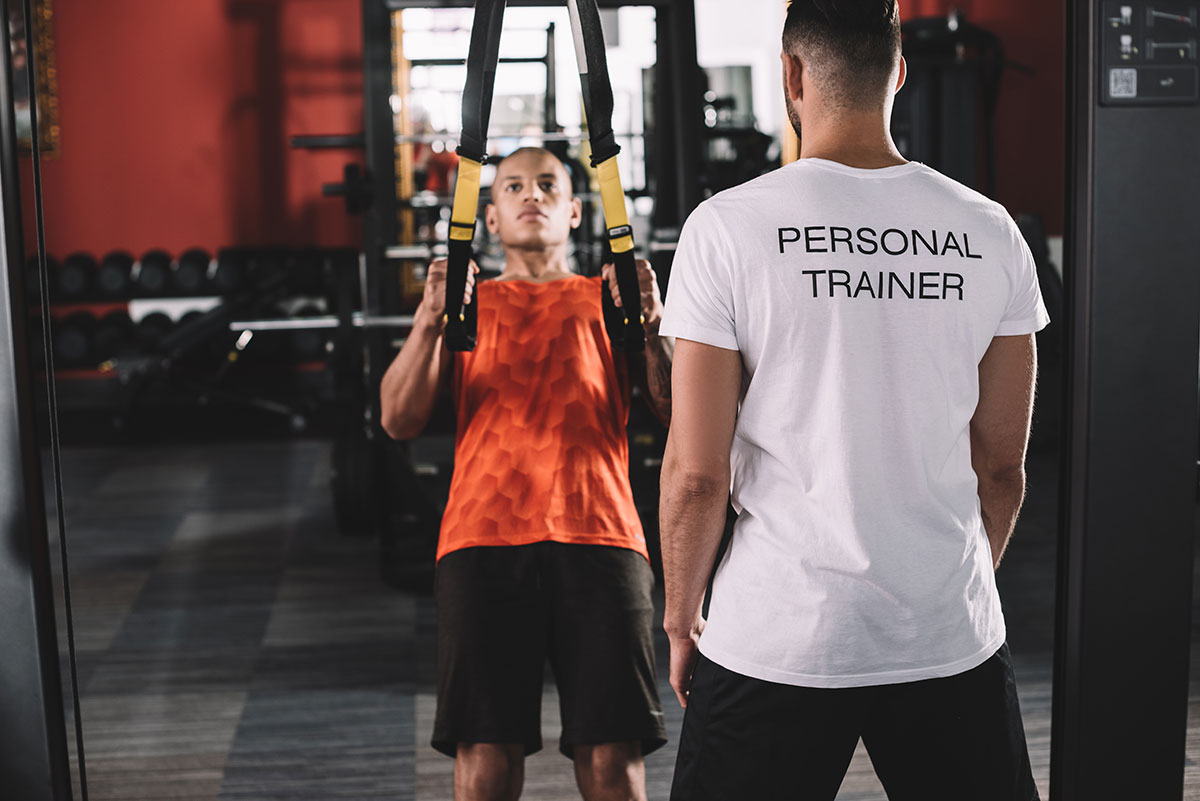
Even after many years of working with clients, I’m still continually astounded by what the body can do. People come in to see me not feeling very good. Some of them actually feel pretty bad and have been feeling that way for years. They’ve usually tried everything out there to feel better. They medicate, get shots, use therapy, ice, tape, or surgery. They stretch, foam roll, try to loosen their fascia, undue an adhesion they were told about, find trigger points or maybe get something adjusted. And their last resort is surgery.
While some things may have valid application, there is something else going on that is not being considered. This one fact sheds some light on it: about 70% of motor neurons lie within the cerebellum. That’s right, the part of the brain that plays a huge roll in behavior, emotions, social interaction, and coordinating attention is loaded with neurons that control movement. The point here is that movement is such a high priority to the human body that any compromise to the quality of that movement can have profound effects anywhere throughout the system. That means that things may be working well in one place and you don’t feel so good in another.
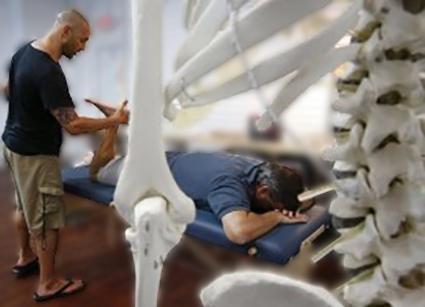
Motor neurons are nerves that connect to muscle. That muscle is part of a muscle system including the brain, spine, nerves and sensor organs. The muscle system is the only thing in your entire body that can move you. When your muscle system quality isn’t what it should be you don’t move well. Not moving well, simply stated, means something’s wrong. When you don’t move well, some part of your body generally doesn’t feel well. When the system isn’t functioning right, it sends signs and signals out in many forms like pain, tightness, stiffness and/or causes delayed healing. This means we might want to be focusing on how you move instead of what you feel.
When we look at things this way we have an entirely new way to deal with bodes when they don’t feel good. We need to identify aspects of the muscle system that function at a lower quality and then RESTORE that functionality. Once we find the positions and movements that the body cannot function in, we can then restore that function. With the muscle system working again you can move better. When you move better you can feel better. You know that leg pain? Maybe it’s time to look at how that knee or hip or ankle moves instead of focusing on what hurts. Back stiff? Instead of stretching tight stuff, maybe it’s time to look at the things that are responsible for moving your back. Move better to feel better and you’ll be better.
Jay Weitzner, MS is a Certified Medical Exercise Specialist through the American Academy on Exercise (ACE); he holds a Bachelor’s and a Master’s in Exercise Science/Human Performance with an emphasis on exercise physiology. Jay specializes in working with clients with musculoskeletal issues — his clients have problems or concerns about their quality of movement and their physical health.
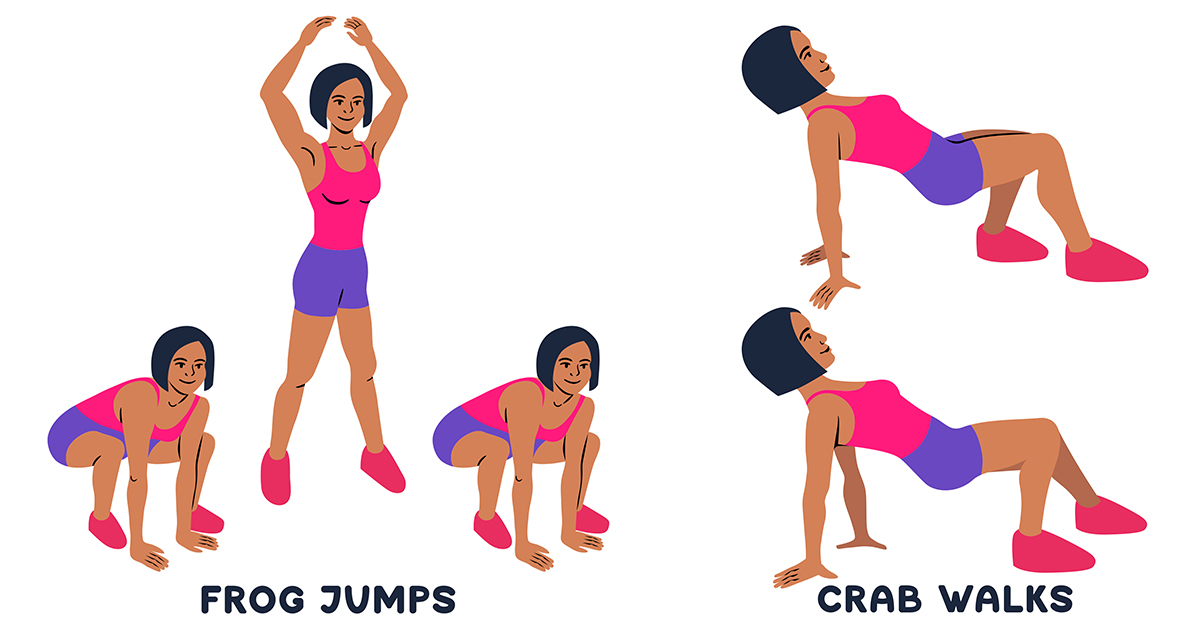
Biomimicry, the practice of looking to nature for inspiration and solutions to human problems, can be a valuable tool and designing exercise programs. By studying the movements and behaviors of animals, we can learn how to move more efficiently, effectively and with less injury.
Here are a few examples of how mimicry can be applied to exercise programming:
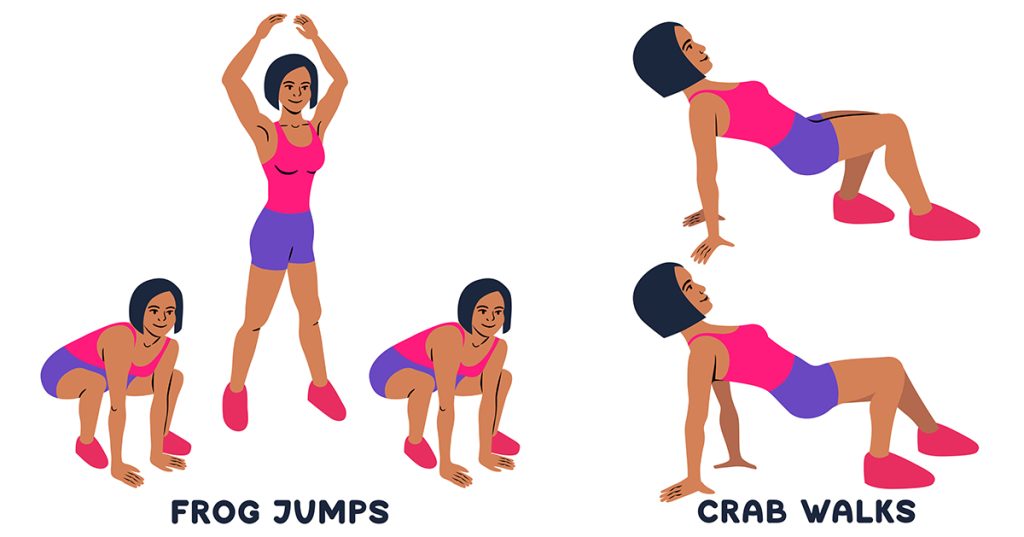
Mimicking the movements of animals: Many animals have unique ways of moving that can be emulated in exercise programs. For example, the frog jump is a plyometric exercise that mimics explosive jumping of a frog, while the crab walk works lateral movement of the hips and shoulders in a way similar to how crabs move.
Utilizing natural resistance: Resistance training is a common component of exercise programs and bio mimicry can offer new ways to approach it. For example, using a slosh pipe, which is a PVC pipe partially filled with water or some other solution, can stimulate the resistance of carrying something like a baby car seat which is very practical.
Incorporating balance instability exercises: Animals have evolved to a move in environments that require balance and stability, and we can learn from them in designing exercises that challenge our own balance and stability. For example, the bird dog exercise, which involves extending the opposite arms and legs while balancing enough force, mimics the stabilizing movement of a hunting dog.
Emphasizing functional movements: Many exercises in the gym isolate individual muscle groups, but biomimicry can remind us to focus on functional movements that are more relevant to real life activities. For example, the farmers walk, which involves walking while holding heavy weights in each hand, mimics the practical movements of carrying groceries or moving furniture.
By incorporating biomimicry into exercise programming, we can create workouts that are not only effective, but also enjoyable and engaging. Additionally, by working with our bodies instead of against them, we can reduce the risk of injury and improve overall physical health.
Reprinted with permission from author.
Mike Rickett MS, CSCS*D, CSPS*D, RCPT*E is a nationally recognized health and fitness trainer of the trainers, fitness motivator, author, certifier, educator, and the 2017 NSCA Personal Trainer of the Year. He has been a fitness trainer for more than 35 years. He directs the personal training site, ApplicationInMotion.com. In addition, he also directs BetterHealthBreathing.com, a conscious breathing educational program focusing on the diaphragmatic technique to enhance overall wellness.

Your passion is to help people maintain or regain optimal health and fitness. Under current law and standards, you are only permitted to work with clients who are already-fit and healthy or have been released for independent exercise and have passed your health screening questionnaire. But those are not the people you yearn to work with. The clients you seek must have authorization or approval from a medical provider before you can proceed.
How often have you met with a potential new client, asked them to get clearance from their doctor, and then never seen them again? Or, a client develops a new pain or problem and you refer them for consultation and that ends the relationship. Another frequent scenario: Your client has followed through with your request only to be referred by their primary care provider for a cardiac treadmill test, but your concern about their low back pain or shoulder dysfunction was not addressed. Success as a medical fitness specialist is dependent upon working relationships with medical professionals. In order to establish those relationships, the aspiring medical fitness trainer needs a better understanding of the medical system. What follows are a few insights into the medical system that medical fitness specialists need to understand.

“Estimates suggest that a primary care physician would spend 21.7 hours per day to provide all recommended acute, chronic, and preventive care for a panel of 2,500 patients.”1[i]. Today, the average primary care provider is responsible for roughly 2,300 patients, so not quite 21.7 hours of work/day, but more than any individual can possibly provide.
In order to cope with the workload, doctors must rely on their support staff to help whenever possible. Do not be alarmed or offended if your inquiries are met by a nurse or medical assistant. Most providers simply do not have the time to meet with you for an introduction or discussion. On the flip side, most doctors would love to have effective, safe, and reliable resources for their patients who need to lose weight, get fit, manage diabetes, recover from surgery or cancer treatment, etc. They need you.
In most cases, providers cannot bill for services unless the patient is in the room with them. Therefore, time spent talking on the telephone, responding to emails, or filling out forms is usually unreimbursed time. This means that your client will probably need to actually make an appointment to be assessed and cleared for exercising with you. To streamline the process, send a letter with your client introducing yourself and what you do. Include a form stating your concerns and your proposed training plan. Design the form to be easy to read, with a simple agree or disagree that can be checked or circled and space for the provider’s signature. You might also want to leave room for comments and questions. If you have received a response from a provider, you should consider sending intermittent progress reports updating the provider about your mutual client/patient.
The Health Insurance Portability and Accountability Act (HIPAA) was enacted in 1996 to protect an individual’s medical confidentiality, particularly when changing jobs which at that time meant changing health insurance providers. Unfortunately, the law is complicated and places multiple restrictions on who members of a medical team can talk to about a patient’s medical condition.
As an unlicensed party, the fitness professional is not privy to “protected health information” (PHI) without direct written consent from the patient (your client). Due to these restrictions, the medical providers cannot fill out or respond to your request for information or clearance without your client’s “written” consent. If the client takes the form and returns it to you, this action implies they have agreed to share the information. If you send the form directly to the provider, that permission has not been granted unless the client has signed a HIPAA release form allowing the doctor to share personal health information with you personally.
The aforementioned are a few reasons why you may have perceived a wall or barrier between you and medical providers. One solution is to ask your client if you might accompany him or her to the appointment to obtain medical clearance or guidance. That way the medical provider would have a specified time and be reimbursed for addressing your concerns. You would be communicating directly with the medical provider and not support staff, and it would be easiest for the client/patient. It is also a way to introduce yourself to the medical provider and initiate a working relationship. Although you will probably not be compensated, it may be well worth your time in the long run.
Know your details
Because there are so many different avenues to becoming certified as a personal trainer, there can be large differences in the knowledge base and competence of one trainer compared to another. The aspiring medical fitness professional must have a thorough understanding of the pathophysiology of the conditions they will be working with in order to communicate effectively with medical providers. In addition, you need skill and experience in the programs you design and utilize with your clients. Be able to back up your training plans with published research.

Recognize that a medical fitness professional has a fund of knowledge that the medical provider does not have
Exercise science is not covered in medical school curricula. Medical school is about illness and disease, not health and fitness. Generally speaking, the average MD knows very little about exercise science. Most do not know about the effects of eccentric versus concentric loading, how to train for endurance versus strength, what to do to improve stability, balance, and core strength. Fitness professionals are not inferior to medical professionals; you have a different knowledge base. Recognize and believe that you have something to offer. You may not know all of the anatomy and biochemistry that the doctor does, but you have a basic understanding of your client’s condition and you know the potential benefits of your interventions. Share this information with the medical providers.
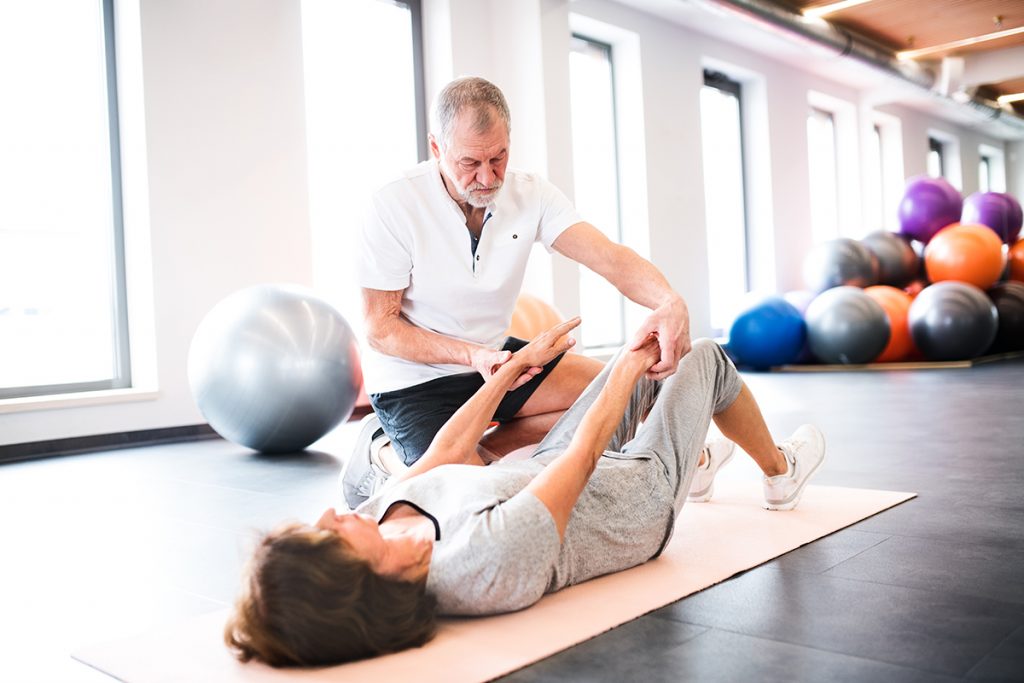
Stay within your scope of practice
Because personal trainers and medical fitness specialists are not licensed by any governmental or legal agency, and because laws vary from state to state, there is no clear definition of the skills and competencies of a medical fitness specialist. Working outside of your scope of practice can lead to civil and even criminal penalties[ii]. Therefore, for the time being, if you want to work with clients struggling to manage chronic illnesses, recover fully from injuries or surgeries, etc., you need to work under the wing of medical professionals who have prescriptive authority – those professionals in the medical field licensed to diagnose problems and prescribe treatment.
Dr. Robert Butler MD, founder of the National Institute on Aging once said: “If exercise could be packaged in a pill, it would be the single most widely prescribed and beneficial medicine in the nation.” There are pockets here and there in the US where medical providers and fitness professionals work together. In many cases, there is a visionary medical provider at the helm of an interdisciplinary team. In other cases, fitness professionals have worked hard to become part of a medical delivery model. The more medical fitness specialists that can take the leap and align themselves with medical providers, the more people will be helped.
This article was featured in MedFit Professional Magazine.
Dr. Mary Hoagland-Scher,MD is a board-certified family physician who practiced medicine for 30 years. When she entered medical school, her goal was to help people stay healthy. As the focus of western medicine shifted away from health to disease management with a strong emphasis on pharmaceutical and or surgical intervention, she became uneasy with her role and decided to discard her prescription pad and learn new tools. Now as a NASM Certified Personal Trainer she is working to shrink the gap between fitness and medicine.
References